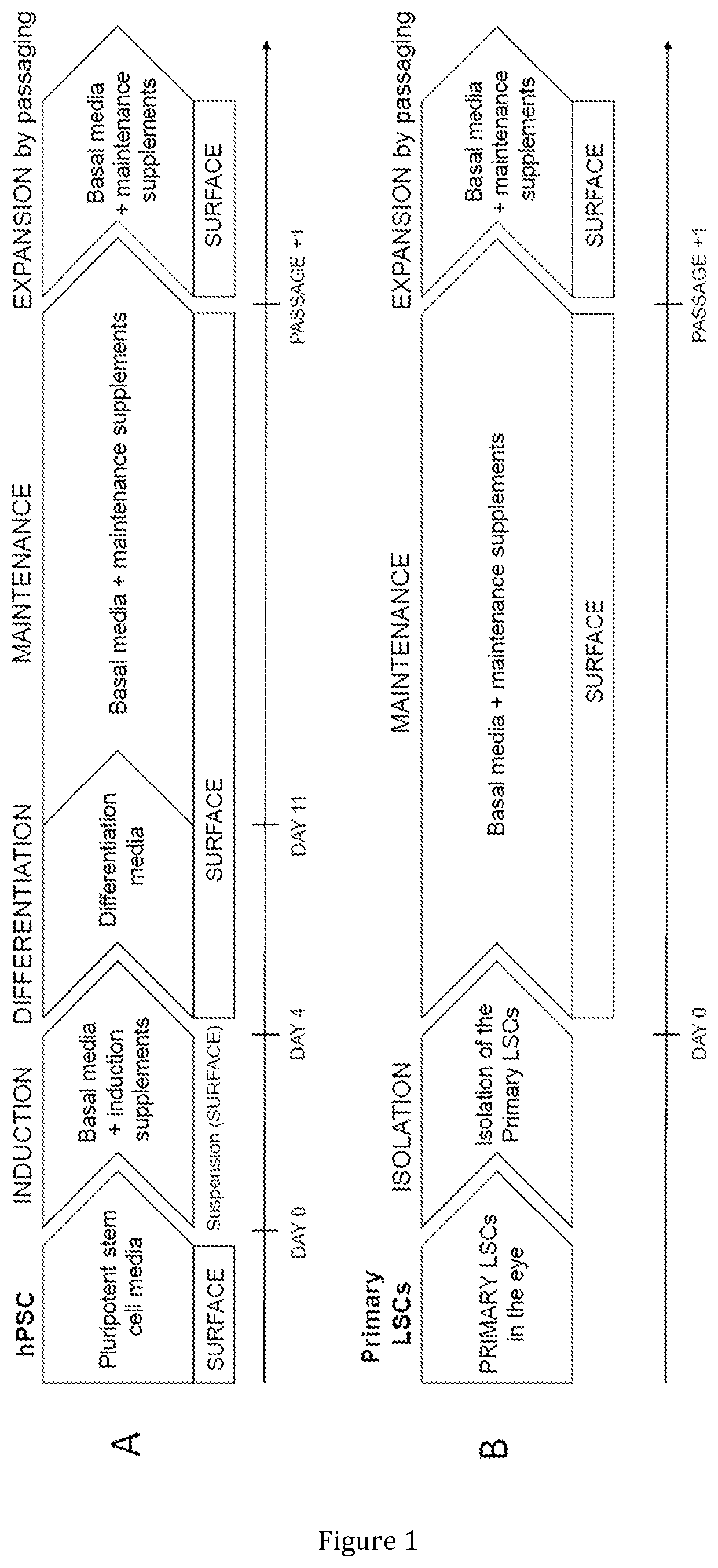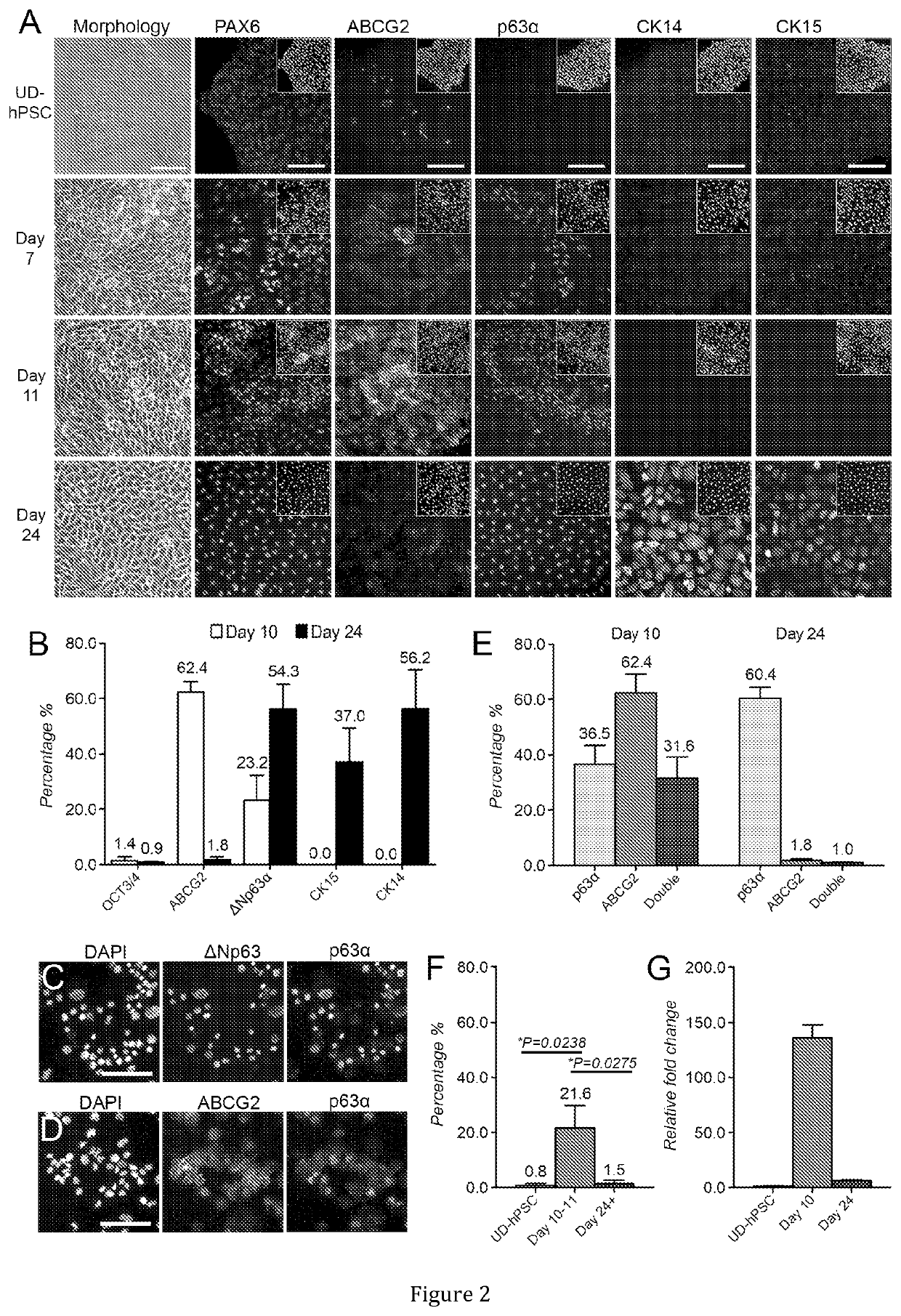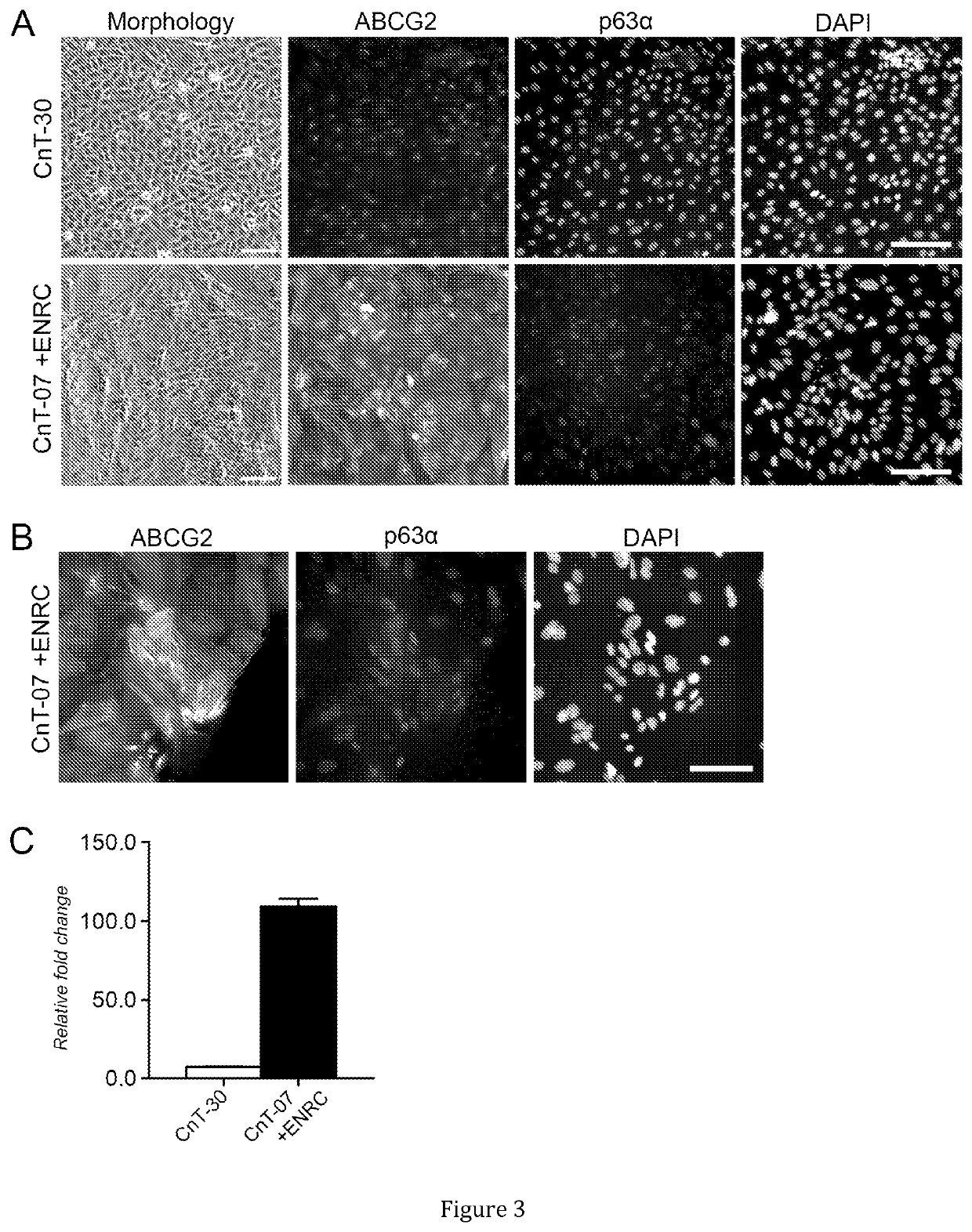Method for obtaining or maintaining abcg2-positive corneal limbal stem cells
a corneal limbal and stem cell technology, applied in the field of corneal limbal stem cell acquisition or maintenance, can solve the problems of hampered corneal blindness and its efficient treatment with lsc transplants
- Summary
- Abstract
- Description
- Claims
- Application Information
AI Technical Summary
Benefits of technology
Problems solved by technology
Method used
Image
Examples
example 1
Examination of Differentiation of Human Pluripotent Stem Cells into Corneal Limbal Epithelial Stem Cells Reveals a Subsequent Emergence of Two Distinct Cell Populations Expressing ABCG2 or ΔNp63α
[0188]These experiments were carried out in order to analyze the differentiation hierarchy along the differentiation process from human pluripotent stem cells into corneal limbal epithelial stem cells using the differentiation method disclosed in WO 2018 / 037161.
Materials and methods
Differentiation Protocol of WO 2018 / 037161
[0189]Three genetically different in-house derived hPSC lines, hESC line Regea08 / 017 and Regea11 / 013 (Skottman et al. 2010) and hiPSC line UTA.04607.WT were used in this study. Human PSC cultures were routineously maintained in serum- and feeder cell-free conditions and differentiated towards the corneal epithelial lineage as described previously in Hongisto et al. 2017 Stem Cell Res and Hongisto et al 2018, JoVE. In brief, colonies of undifferentiated hPSCs were enzymatic...
example 2
Maintenance of ABCG2 Expression
[0195]These experiments were carried out in order to establish culture conditions required for preserving ABCG2 expression for extended periods.
Materials and Methods
[0196]Culture Conditions for Maintaining ABCG2-Positive hPSC-LSC Phenotype
[0197]For the maintenance of ABCG2-positive population, CnT-30 culture medium was replaced with CnT-07 (CELLnTEC Advanced Cell Systems AG, Bern, Switzerland) supplemented with ENRC (50 ng / ml mouse recombinant epidermal growth factor (EGF, Invitrogen), 100 ng / ml mouse recombinant Noggin, 1 μg / ml human recombinant R-spondin-1 (both from Peprotech) and 3 μM CHIR-99021 (Stemgent) at day 10-11 (including the four day induction period). The CnT-07+ENRC medium was either introduced directly to the adherent cultures or alternatively, the hPSC-LSCs were concomitantly enzymatically dissociated to single cell suspension and passaged onto fresh LN-521 / Col IV coated wells in a density of 1000-5000 cells / cm2 in the new medium. In b...
PUM
 Login to View More
Login to View More Abstract
Description
Claims
Application Information
 Login to View More
Login to View More - R&D
- Intellectual Property
- Life Sciences
- Materials
- Tech Scout
- Unparalleled Data Quality
- Higher Quality Content
- 60% Fewer Hallucinations
Browse by: Latest US Patents, China's latest patents, Technical Efficacy Thesaurus, Application Domain, Technology Topic, Popular Technical Reports.
© 2025 PatSnap. All rights reserved.Legal|Privacy policy|Modern Slavery Act Transparency Statement|Sitemap|About US| Contact US: help@patsnap.com



